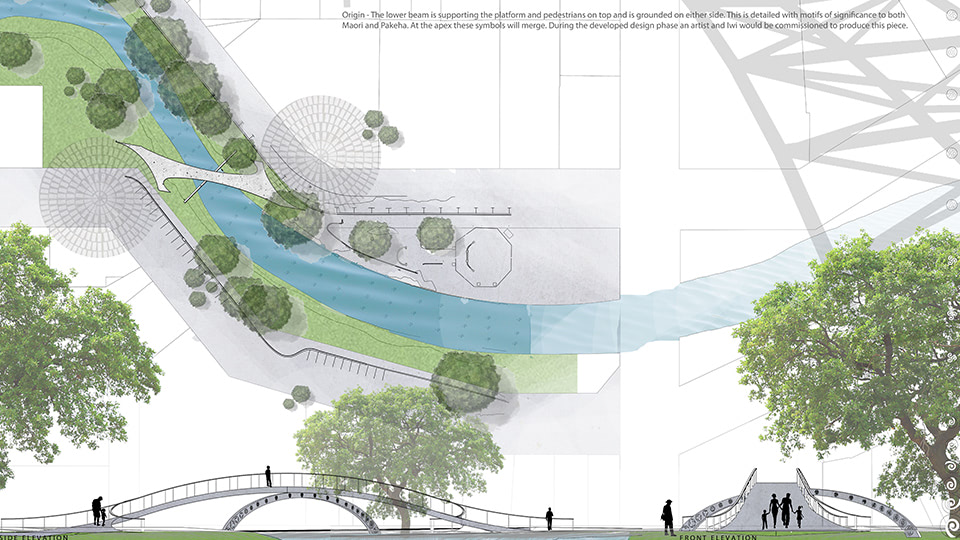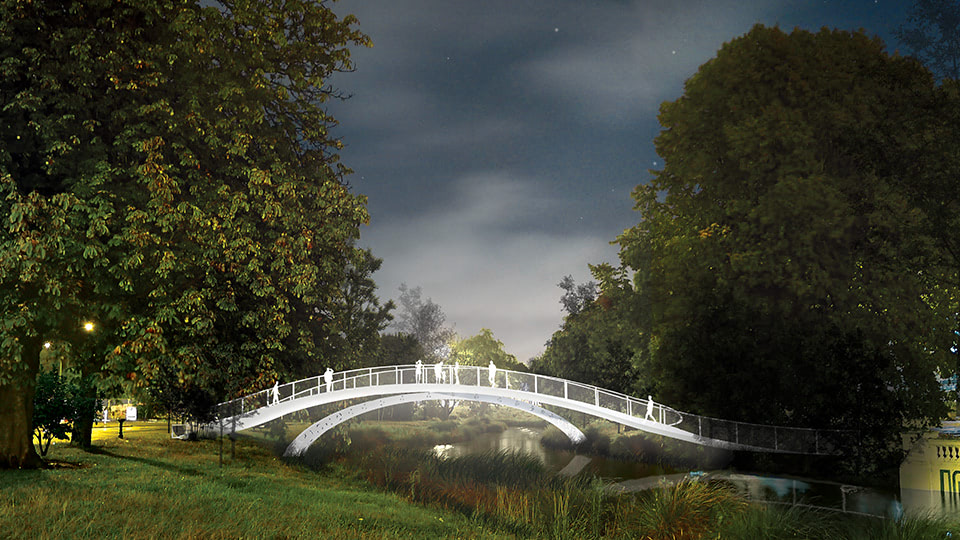North Frame Pedestrian Bridge
THE QUICK LOWDOWN
This competition submission for the North Frame Pedestrian Bridge was developed in collaboration with BUD Design (Structural Engineer) and INOVO (Project Planning and Management). Designed as both a functional crossing and a sculptural intervention, the proposal sought to create a bridge that would respond dynamically to its environment, mirroring the fluidity of the Avon River while enhancing the pedestrian experience.
WHERE THE MAGIC HAPPENS
Situated within Christchurch’s North Frame, the bridge was envisioned as a key connection between the riverbanks, seamlessly integrating with the evolving urban landscape. The design moved away from rigid symmetry, instead embracing an organic, ever-changing form that encouraged users to slow down, take in their surroundings, and engage with the natural setting.
DESIGN DRIVERS
The bridge was conceived as an extension of the Avon River’s movement, with its flowing, asymmetrical structure creating a constantly shifting perspective as pedestrians crossed. By breaking away from traditional linear forms, the design aimed to enhance the experience of movement, ensuring that each journey across the river felt intentional and immersive.
Beyond its sculptural presence, the bridge was designed to meet critical infrastructure and access needs, seamlessly integrating with pedestrian networks while maintaining structural efficiency. The collaboration between architecture, engineering, and project planning ensured that both form and function were carefully considered in the design process.
CHALLENGE ACCEPTED
Balancing structural requirements with a dynamic, non-traditional form was a key challenge. The asymmetry and variation in shape required innovative engineering solutions to maintain structural integrity while achieving the desired fluidity. Additionally, the project sought to enhance the river’s identity within the city, reinforcing its role as a natural and cultural landmark.
Despite the competition’s eventual cancellation, the conceptual exploration of movement, materiality, and user experience remains a valuable exercise in integrated urban design and placemaking. The proposal stands as an example of how infrastructure can be more than just functional—it can elevate the way people interact with the built and natural environment.

